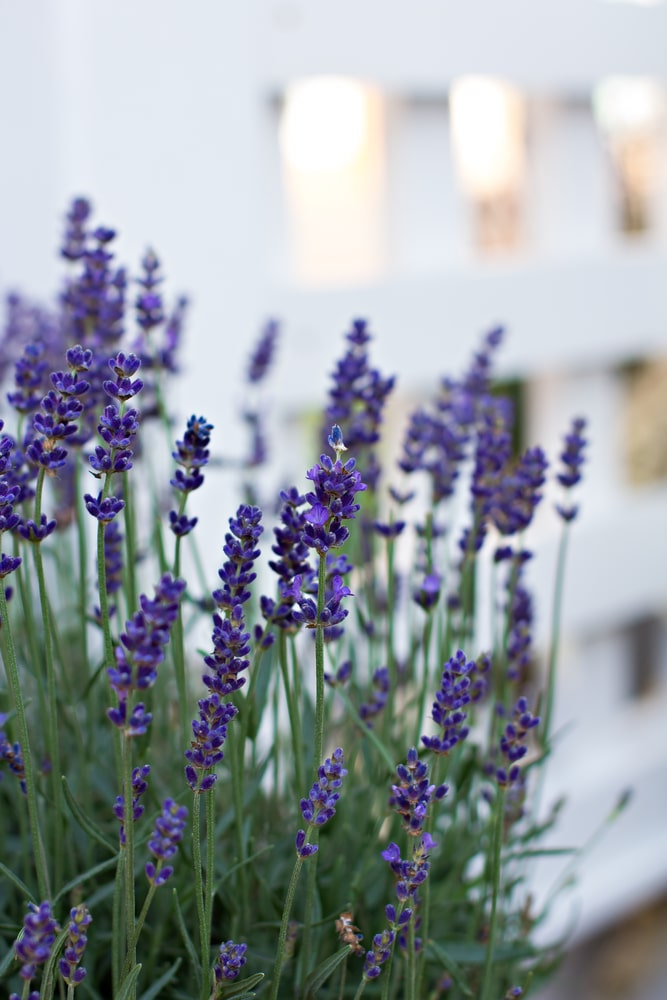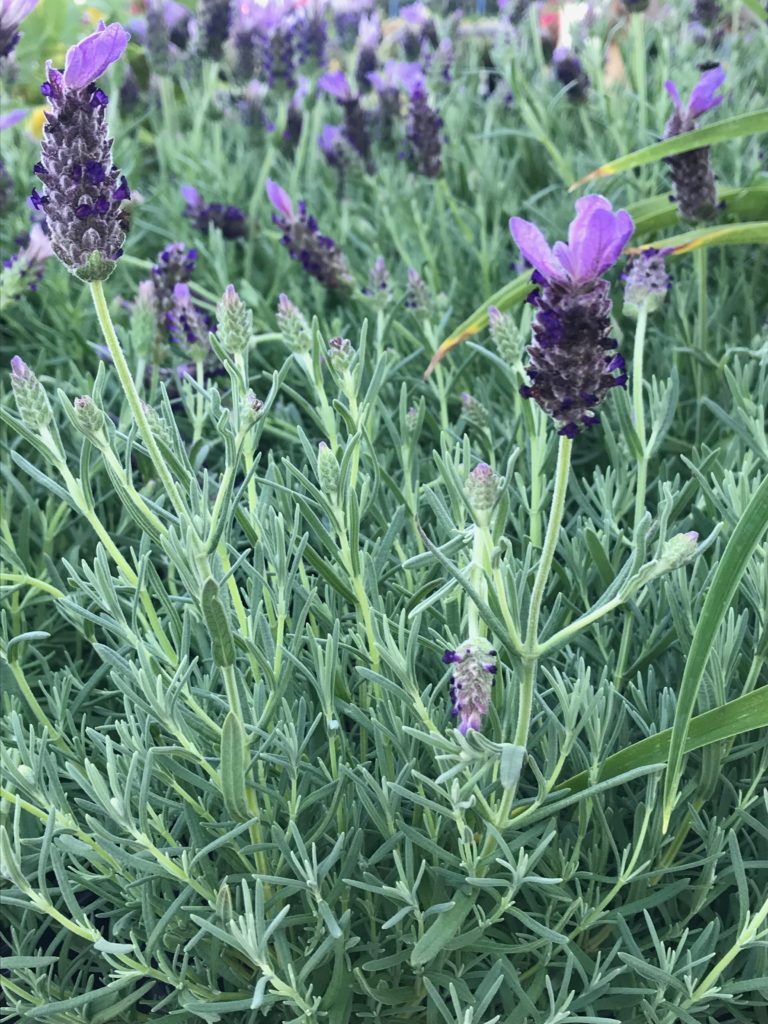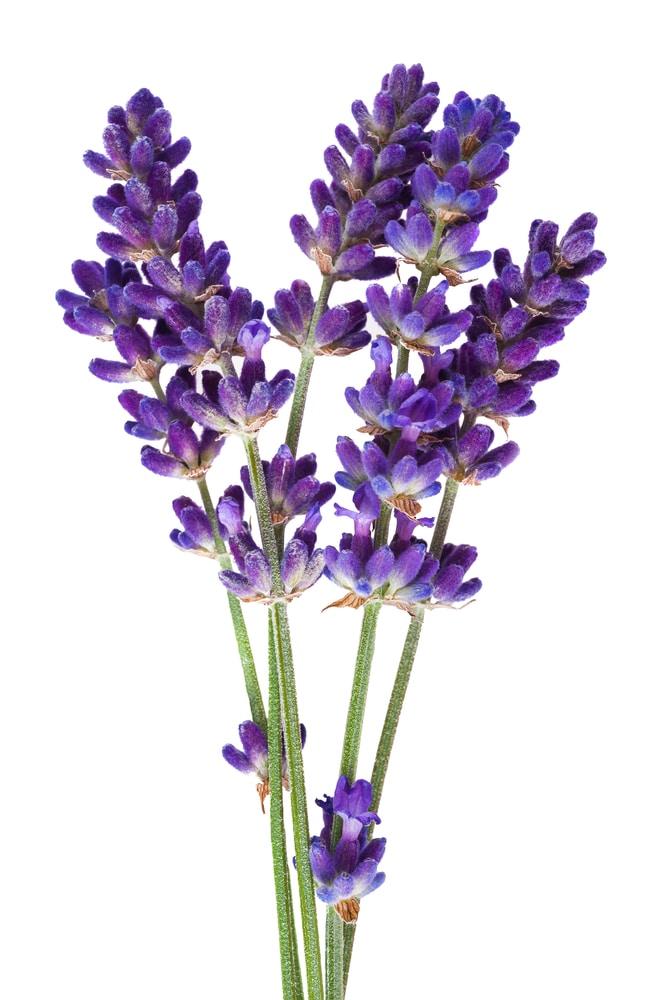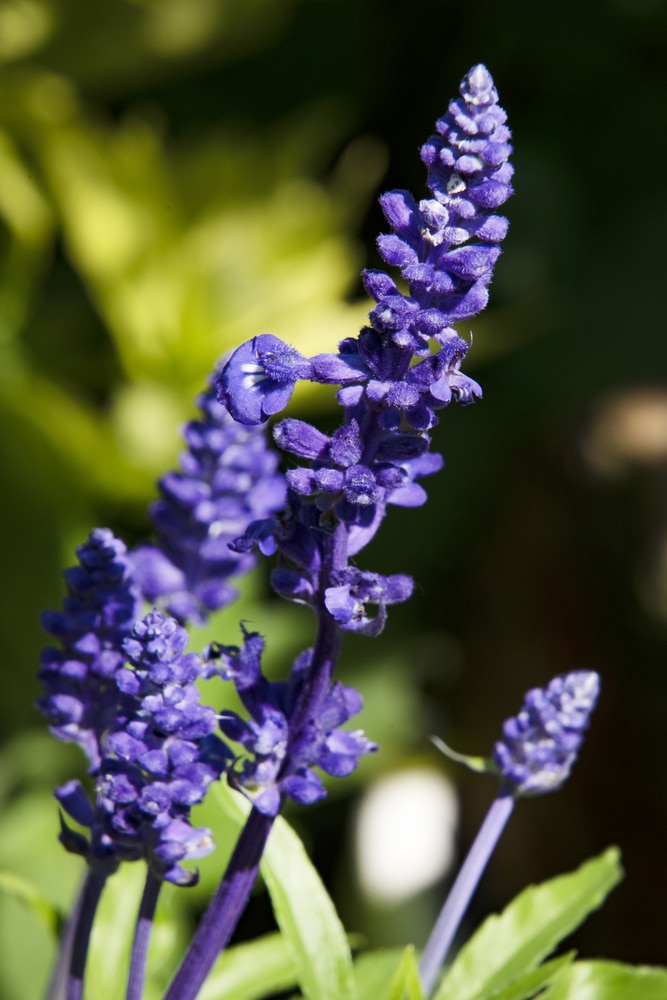How to Care for Lavender: A Beginner’s Guide
Interested in adding lavender plants to your garden? Great choice! It’s one of the hardiest perennials you can grow. It’s perfect for newbies and beginners.
It’s an incredibly versatile plant, and many people grow and use it for various purposes beyond the garden, such as cooking, crafting, and aromatherapy.
Its delicate purple flowers and calming scent make it a common choice for many gardeners looking to add texture to their landscapes.
If you intend to cultivate lavender, a few simple growing tips can go a long way!
Firstly, choosing a suitable variety that can withstand your area’s soil and climate conditions is crucial.

Then you can hopefully choose a variety that appeals to you. (I love the English variety because of its beauty, even though Spanish lavender is much more widely available in my planting zone of 10A).
Lavender plants usually thrive in regions with well-draining soil and abundant sunlight.
Remember that lavender needs about 6 hours of sunlight each day, so choose a sunny planting spot!
Once you have chosen the location, the next step is to prepare the soil for planting lavender.
Lavender grows well in slightly alkaline soil. If your soil tests too acidic, add small handfuls of garden lime until it tests more alkaline.
It is also vital to use soil that is well-draining because lavender can rot if left to sit in a pool of water.
Understanding Lavender
Types of Lavender
Lavender is a highly versatile herb that comes in different varieties.
The most commonly known types of lavender are English, French, and Spanish.
English lavender is known for its sweet fragrance and is often used in cooking.
On the other hand, French lavender has a more medicinal and aromatic scent that is commonly used in perfumes and soaps.
Finally, Spanish lavender is notable for its unique, pineapple-shaped flowers and is frequently used in landscaping because of how drought-tolerant and tough it is.

Benefits of Growing Lavender
As stated above, lavender isn’t just pretty. Just take a look below at the things it can offer your home:
Repelling bugs: Lavender is a natural insect repellent and is used in the garden to repel pesky mosquitoes.
Attracts pollinator: Bees, butterflies, and hummingbirds love to feed from it!
Aromatherapy: The scent that lavender plants give off is known to be calming and thus used in aromatherapy. People use lavender as an essential oil.
Culinary Uses: Have you ever had lavender-infused lemonade a lavender latte? So delicious! Lavender can enhance various dishes, including desserts, teas, cookies, and cocktails.
Adding lavender to your garden can enhance its beauty and function and with its various types and benefits, there’s bound to be a perfect lavender type for you!
Planting Lavender
Choosing the Right Soil
Lavender can be non-fussy, but it performs best in a well-draining soil mix with a pH between 6.5 and 7.5.
If you’re planting in clay soil, you can make it looser by adding handfuls of sand or perlite to improve drainage and airflow.
If your soil is sandy, try adding compost, peat moss, or more potting soil to help it retain more water.
Selecting a Location
Lavender thrives in sunlight, so choosing a location that receives ample sunlight is crucial.
Your lavender plants should receive at least 6-8 hours of direct sunlight daily.
Additionally, select a location protected from strong winds, as strong gusts can easily damage lavender plants; the thin stems might break with strong winds.
I live in a windy area, so I always have to be mindful of this when I plant.
Planting Times
You can plant in the spring or fall season.
As with many other plants, try planting before the heat of the summer season really kicks in.

High temperatures and direct sunlight can make it difficult for new plants to survive and flourish in a new planting spot.
If you decide to plant in the fall, ensure your lavender plants have enough time to establish their root system before the first frost!
Always check your planting zone’s first frost date before buying and planting new plants for your garden. Give yourself ample time.
Planting lavender is simple:
- Dig a hole that is only a bit larger than your plant’s rootball
- Loosen the plant’s root system very gently, using your fingers. Try not to break too many roots
- Place the plant inside the hole you dug, and then cover the entire hole and root system with soil. The planting spot should now feel firm, not soft or mushy.
- Water the soil generously to drench the area after planting.

Caring for Lavender
How to Water Lavender Plants
Lavender requires moderate watering, especially during its first year of growth. This is when the root system is working to establish itself in its new home.
It’s essential to water the plant deeply but not too frequently.
Like succulents and other drought-tolerant plants, lavender prefers its soil to dry between waterings.
Don’t let the soil stay dry for several days at a time, though; this would be too extreme, especially during the summer months.
To avoid common problems like root rot, don’t water too frequently if the soil is already wet. Always try to water the soil directly; this will help prevent disease.
It is best to water your lavender plant once or twice a week in the summer months, depending on the weather conditions. During the winter months, reduce watering to once a month.
When I grow lavender in pots, I actually water about every two days during the summer.
We have hot summers here and get many heat waves, so I help protect plants by watering them in the morning before the heat sets in for the day.
If I let them fend for themselves, the foliage would burn, and the root system would suffer.
Pruning Techniques
Pruning is an important part of lavender care. VERY important! You shouldn’t skip this step if you want generous blooms in the future.

Pruning encourages healthy growth and prevents the plant from getting too woody.
The best time to prune lavender is in early spring. This is just before the plant grows for its active growing season.
Prune away any brown, dead branches. They should be easy to spot.
After you’ve done that, you can trim down the branches by about one-third of their length. NEVER prune off more than 1/3 of the plant because it won’t survive.
Pruning can also help you control how your lavender plant is shaped for aesthetic purposes.
It’s also recommended to prune the lavender plant again in the fall, cutting back the branches to keep it from getting too woody and instead focus on growing new foliage.
Harvesting and Usage
Harvesting Tips
Harvesting lavender is all about timing, just like any other herb, vegetable, or fruit.
You should aim to cut the lavender stems when the flowers have just begun to open but BEFORE they fully bloom.

This usually happens around mid-summer, depending on the variety and weather.
To harvest, take a clean pair of garden scissors or pruning shears and cut the stems just above the leaves.
Remember to leave some foliage on the plant, though, as it helps the lavender grow and produce flowers in the future.
Keep in mind that harvesting lavender on a dry day is essential, as moisture can cause the flowers to decay or mold after you harvest.
Fertilizing Lavender Plants
Lavender isn’t a heavy feeder and can it actually thrive in poor soils.
Fertilizing just once a year will do plenty to aid the plant. Overfertilizing will lead to more foliage but very little blooms – not good!
You can add a slow-release fertilizer to the soil just once during early spring, right before the growing season.
When you fertilize, always make sure the soil is wet, first. Fertilizing on dry soil can burn the roots.

Troubleshooting Common Issues
Pest Management
Lavender is a resilient plant, but it can still be affected by pests. Here are some common issues that can harm lavender and tips on handling them.
Aphids: These tiny insects can suck the sap out of lavender leaves, causing them to wilt and turn yellow. Aphids can be controlled by spraying lavender plants with a water hose or by spraying with a natural insecticide.
- Spider Mites: Spider mites can cause discoloration and yellowing of lavender leaves. To control these pests, use insecticidal soap or neem oil to spray lavender plants.
- Slugs and Snails: Slugs and snails can damage lavender by chewing holes in leaves and flowers. You can protect lavender plants by using slug and snail bait or placing a ring of copper tape around their base.
Disease Prevention
Lavenders can be protected from various diseases if you take a few preventative measures. Here are some common diseases that can affect lavender plants and tips on how to prevent them:
- Root Rot: Overwatering can cause the root system to rot. To prevent root rot, ensure lavender plants are planted in well-draining soil and water them sparingly.
- Powdery Mildew: This disease can cause a fine, white coating on lavender leaves. To prevent powdery mildew, lavender plants should be planted in an area with good air circulation, and overhead watering should be avoided.
- Gray Mold: This disease can cause grayish-brown spots on lavender leaves and flowers. To prevent gray mold, ensure lavender plants are planted in an area with good air circulation and avoid overhead watering.
Following these tips can help keep your lavender plants healthy and thriving. Remember that lavender d